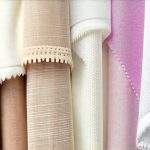Low-Friction Fabrics for Daily Bladder Comfort
Living with bladder sensitivities – whether due to urge incontinence, overactive bladder (OAB), post-surgical recovery, or simply heightened awareness around bodily functions – can significantly impact daily life and confidence. Many individuals find that the friction from clothing against sensitive skin exacerbates symptoms, leading to discomfort, irritation, and even triggering unwanted urges. Traditional fabrics like rough wools or tightly woven synthetics can contribute to this issue, creating a cycle of anxiety and restriction. Choosing the right undergarments and clothing materials isn’t about ‘curing’ a condition; it’s about proactively managing potential triggers and improving overall quality of life through mindful fabric selection.
The key lies in understanding how fabrics interact with the delicate skin around the pelvic region. Friction, even seemingly minor friction, can stimulate nerve endings, potentially sending signals to the bladder that mimic the sensation of fullness or urgency. This is why low-friction fabrics are so valuable – they minimize this stimulation and promote a sense of calm and comfort. Beyond just incontinence products, considering the fabric composition of everyday clothing, from underwear to trousers and leggings, can make a surprisingly large difference in managing bladder sensitivity and reducing anxiety around potential accidents or discomfort. This article will explore the benefits of low-friction fabrics and guide you through making informed choices for enhanced daily comfort.
Understanding Friction & Sensitive Bladders
The relationship between fabric friction and bladder health isn’t always obvious, but it’s deeply rooted in how our nervous system processes sensory information. Our skin is covered in nerve endings that are constantly transmitting signals to the brain. When a rough or abrasive fabric rubs against sensitive areas – particularly around the perineum and lower abdomen – these nerves fire more frequently. For individuals with bladder sensitivities, this heightened stimulation can be misconstrued as a signal to empty the bladder, even when it isn’t full, leading to urgency and potential accidents. Reducing friction is essentially about ‘quieting’ those nerve signals.
The type of fabric matters immensely. Synthetic materials like polyester and nylon, while often durable and affordable, tend to create more static cling and can be less breathable than natural fibers. This increased friction combined with reduced airflow can lead to irritation and exacerbate bladder symptoms. Conversely, smoother, softer fabrics allow for better air circulation and minimize nerve stimulation. The weave of the fabric also plays a role; tightly woven materials generally have more surface area and therefore more potential for friction compared to loosely woven or knit options. To support overall wellness, consider incorporating strategic water intake alongside fabric choices.
Beyond the immediate physical sensation, chronic friction can lead to skin irritation, inflammation, and even breakdown of the skin barrier. A compromised skin barrier is more vulnerable to infection and further sensitivity, creating a vicious cycle. Therefore, choosing fabrics that are not only low in friction but also gentle on the skin is essential for long-term comfort and well-being. It’s important to remember that everyone’s sensitivities differ, so what works for one person may not work for another; experimentation and mindful observation are key.
The Benefits of Microfiber & Modal
Microfiber fabrics have become increasingly popular in clothing designed for sensitive skin, and with good reason. They are incredibly soft and smooth due to their extremely fine fibers – often made from polyester, but processed to eliminate much of the abrasive texture associated with traditional synthetics. This creates a fabric that glides over the skin rather than rubbing against it. Moreover, microfiber is highly absorbent, allowing it to wick away moisture efficiently and keep the area dry, which further reduces friction and minimizes irritation. – Microfiber underwear and incontinence pads are readily available.
Modal, derived from beech tree cellulose, offers similar benefits but with a more natural origin. It’s exceptionally soft, breathable, and drapes beautifully. Modal also boasts excellent moisture-wicking properties, making it an ideal choice for individuals experiencing bladder sensitivities. Unlike some synthetic fabrics, modal is known to become softer with each wash, further enhancing its comfort over time. – Look for blends that combine modal with a small percentage of spandex for added stretch and support. Pairing these fabric choices with techniques to reduce pelvic pressure can further improve comfort.
These materials are often preferred in garments designed specifically for incontinence because they prioritize comfort and minimize irritation, allowing individuals to manage their condition with greater confidence and discretion. Choosing these fabrics isn’t about hiding a problem; it’s about proactively supporting your well-being. It is important to note that even within microfiber or modal options, the quality can vary significantly. Opting for higher-quality versions will generally result in a more comfortable experience.
Silk & Bamboo: Luxurious Comfort Options
Silk, traditionally associated with luxury, offers exceptional softness and smoothness. Its natural fibers are incredibly gentle on the skin and allow for excellent airflow. While often considered a more expensive option, silk undergarments can provide unparalleled comfort for those with extreme bladder sensitivities. – Silk’s inherent hypoallergenic properties may also benefit individuals prone to skin reactions. However, it’s important to note that silk requires delicate care and is not as durable as some other options.
Bamboo fabrics are gaining popularity as a sustainable and comfortable alternative to traditional materials. Bamboo fibers possess natural antibacterial and moisture-wicking properties, making them ideal for sensitive skin. They are also incredibly soft and breathable, providing a similar level of comfort to modal or microfiber. – Bamboo is often blended with other fibers, such as cotton, to enhance its durability. Consider complementing these choices with focused self-care practices for holistic support.
Both silk and bamboo represent premium options that prioritize ultimate comfort and gentleness. While the cost may be higher, the benefits for individuals struggling with bladder sensitivities can be significant. Investing in quality fabrics can improve your daily life. Remember to always check care labels and follow washing instructions carefully to maintain the softness and integrity of these delicate materials.
Layering & Avoiding Irritants
Layering clothing strategically is another effective way to minimize friction and maximize comfort. Wearing a smooth, low-friction base layer – such as microfiber or modal underwear – underneath looser-fitting outer garments can create a protective barrier between your skin and potentially irritating fabrics. This approach allows you to wear the clothes you like without sacrificing comfort. – Avoid tight-fitting clothing that restricts airflow and increases friction.
Beyond fabric choice, it’s crucial to be mindful of potential irritants in laundry detergents and fabric softeners. Harsh chemicals can strip away natural oils from the skin and exacerbate sensitivities. Opt for fragrance-free, dye-free detergents specifically designed for sensitive skin. – Consider double rinsing your clothes to remove any residual detergent. Prioritizing comfort is also linked to overall wellbeing—explore restorative practices to minimize stress.
Finally, paying attention to seams and tags can make a difference. Rough or scratchy seams can cause irritation, so look for garments with flatlock seams or seamless construction. Remove tags whenever possible, or choose clothing with soft, easily removable tags. Small adjustments can have a big impact on your comfort level. By combining mindful fabric selection with careful attention to layering and potential irritants, you can create a more comfortable and confident experience for yourself. Further enhance daily routines by incorporating gentle stretching exercises.





















